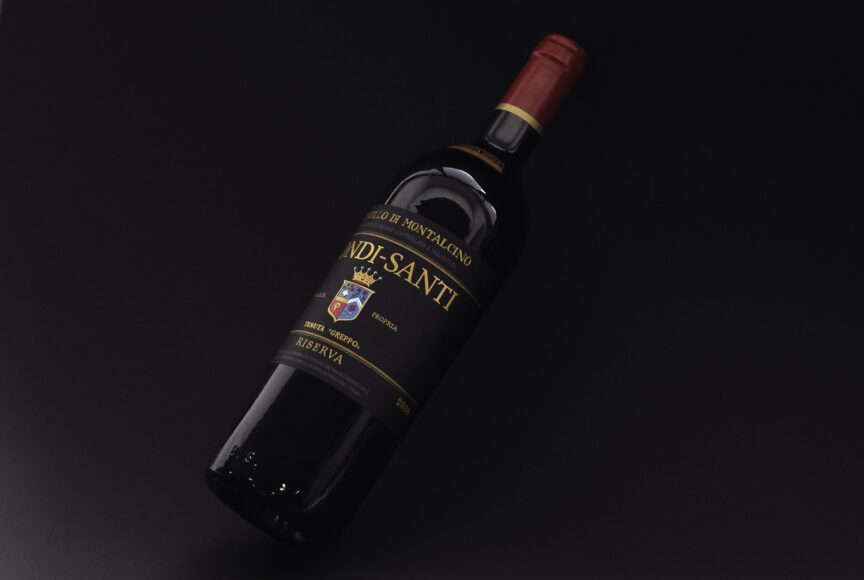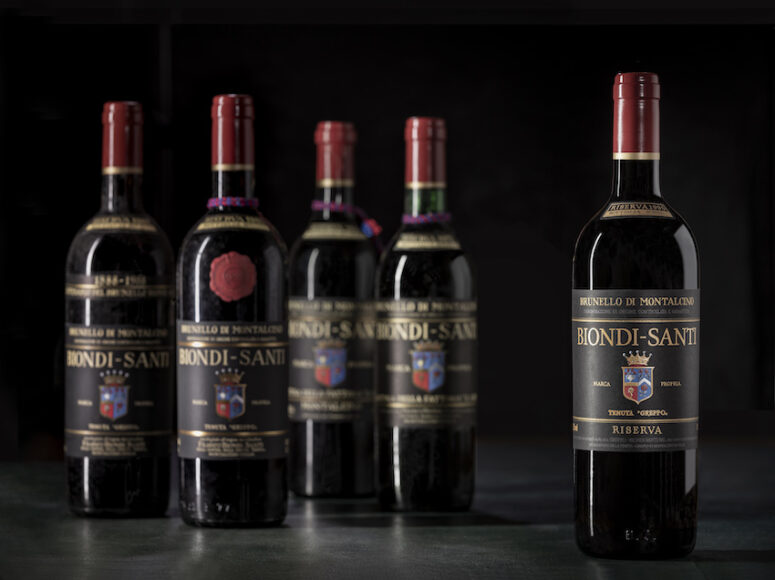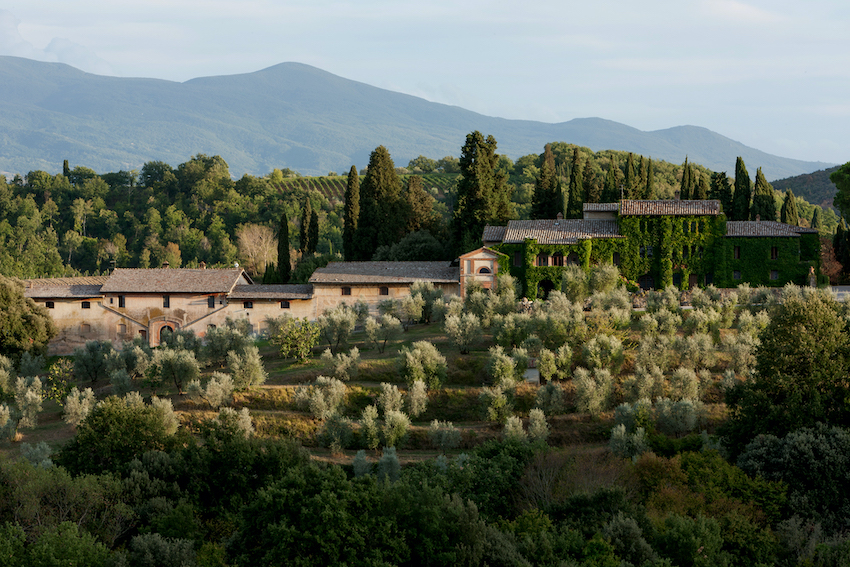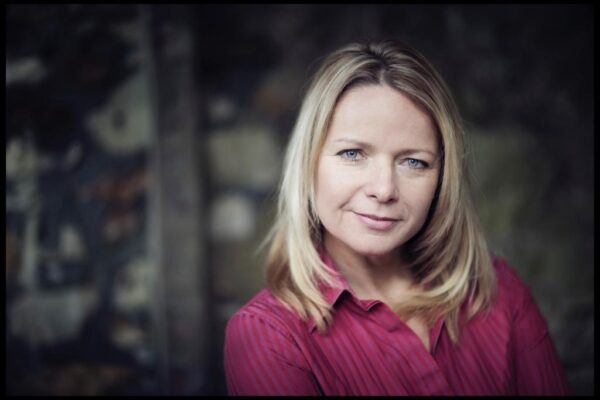Biondi Santi is easily one of the most famed historic estates in all of Italy. Critically acclaimed for its balance and ageability, Biondi Santi is known for creating wines that can evolve into some of the most compelling you might ever taste. Founded in the mid-1800s by Clemente Santi, a pharmaceutical graduate from Pisa University, the Biondi Santi family lineage of wine production and curation dates back to the middle ages. Believe it or not, at that time, the family was best known for their Moscadello di Montalcino. Clemente wouldn’t go on to invent the Brunello until the late nineteenth century under the guidance of his grandson Ferruccio Biondi Santi.
Those of you following Liv-ex and redrafting your cellar plan this year would do well to take heed of the family’s special edition Brunello di Montalcino Riserva 2012 release. A seventh-generation estate with this much global prestige requires an incredibly seasoned individual with a steady hand to steer the ship. We sat down for a tasting with CEO Giampiero Bertolini to hear more about one of the greatest dynasties in Italian winemaking history.
Having been at the helm of Biondi Santi since 2018, Giampiero comes from good stock, having spent 16 years at Marchesi de’ Frescobaldi SpA. With a masters degree in Economics and Marketing from the Università degli Studi di Firenze, he’s already on the front foot.
There’s an incredible history here Giampiero. Can you tell us some of your favourite moments through the ages?
I joined the estate two years ago and still remember the first time I went down the avenue with the Cypress trees. It was really at that moment that I realised why this place is so special. We still work daily from the original cellars underneath the family villa where the Brunello was produced for the first time by the family in 1888.
In 1869, Clemente received an award from Montapulchiano for the quality of his Brunello, and that is the first time it was listed. But the real moment came with Ferruccio, who brought the name Biondi Santi to life. He produced the first bottle, the 1888, which we still have two bottles of in the cellar. Today, there are seven generations. Each member of the family left something very relevant, not only for Biondi Santi, but for the terroir; for Montalcino and for Brunello.
Next came Tancredi Biondi Santi, who was a great man, one of the best winemakers in Italy for 40 years. He was the one that produced the famous Riserva ‘55 which was named as one of the 12 best wines of the century. It was the only Italian wine to be listed and, of course, we still have some of the ‘55 in the cellar. More importantly, Tancredi, given his reputation, was asked by the government to write the rules for the appellation of Brunello in the 1960s. Now we have 250 or so producers in the region, all following the rules written by Tancredi.
And perhaps the most important, during the second world war, when the German army was sweeping through the region, it was known that they had orders to take Villa Greppo. So, Tancredi with his son Franco and a worker from the estate walled up all the riservas that we had in the cellar. We still have the 39 vintages produced since 1888, thanks to Tancredi.
Then came Franco. His first vintage was in 1971. He grew up on the estate, so he was very skilled, had great vision, and was certainly an innovator in technology. He revolutionised the cellar and established the temperature control for the fermentation. He was the one who started the cloning at Greppo and worked on a seven-year long study with the University of Florence. Finally, in 1978, he was the first producer in Italy to register a clone with its family name, BBS11. It’s important to note, he made it available to everyone. Biondi Santi has always shared the knowledge and expertise with the Montalcino people. They never wanted to keep it a secret.
What do you personally think was the most important step taken by Franco when he cultivated the estate?
Personally, I think it was to defend the Brunello style in a period at the end of the 1990s, when the super Tuscans were taking a lot of attention from the market. Now super Tuscans are fantastic wines, but they’re very different from the style of Brunello. So, what he did in 1994 was organise a huge event at Greppo, where he opened 15 different vintages from 1888 to 1988.
That was extremely important for Brunello, because one of the most important journalists awarded 100 points to the Brunello Riserva 1981. This showed how the Brunello and the Sangiovese could age elegantly if it was well produced and well kept in the cellar. It put the appellation back on the map as one of the most important wines. Every member of the family left their mark in some way.
In 2017, EPI acquired the Tenuta Greppo Biondi Santi and, working closely with yourself, some additional hectares. Can you tell us what steps have taken place with the influx of capital?
The estate today has 32 hectares. Last year, we brought six additional hectares because we are replanting some of the vineyard that’s not producing the quality we want to achieve in the future. Most of the vineyard surrounds the estate here at Greppo, but we also have four other locations with different exposure and altitude. Most of these are quite high, which is important because the key characteristics of the wine has always been the longevity and the freshness.
Presumably there has been a large increase in soil analysis and R&D?
There is one rule for us that is really important: it’s not about revolution, it’s evolution. That’s our mantra. Since I joined the company, that’s what I have been repeating. So, we are doing exactly what you have mentioned. We have the possibility now to invest capital into the estate which was not the case for the last 15 to 20 years. So, we’re investing to increase quality and maintain our style for years to come. We started with the soil, because our mission is to get the best from it, while also respecting the cellar. So the cellar is not a place that we are changing.
Our most important project has been a process of parcelization, which started two years ago and the purpose is to study every vineyard that we have. So, last year we defined 12 parcels, which now can be followed for 3 to 4 years in the cellar. This does bring investment into the cellar, because we now need to have more casks with smaller sizes to follow each parcel. It’s incredibly interesting, because we already started tasting the different parcels and the quality. And more importantly, the precision of the wine in the future will be much greater. So, now we can play with different variables of sangiovese from different parts of the vineyards.
Are you using younger vines now, then, based on that research?
Absolutely, it’s part of the study. In the past, Biondi Santi were producing the Rosso with the younger vines and the Riserva with the older, which I believe is a rule that could still stay with us. But obviously, if we discover that our younger vines are delivering very high quality, which is possible, why wouldn’t we use this for the Brunello and the Riserva? So, this study could drive us and give us much more information to learn what can be done better in the future.
As you may know, we still have our most important vineyard, which comes from the 1930s. So it’s almost 100 years old and is kept with a lot of care, obviously, and a special structure. It’s basically our future, because we are really studying what is happening in these very old vines. Also, in terms of clones in the vines, I would say that 90% of these will be used for the Riserva because it’s such high quality. But the rest of the vineyard will be challenged with this study and it is already providing results. So we’re protecting the future of the estate.
That’s bound to boost collector confidence in addition to market value?
We always want to guarantee that each of our Riservas that leave Greppo is documented, so each bottle has a specific date on the back label. This guarantees the bottle hasn’t already been around the world in different cellars. That’s something we established last year. We’re still very artisanal in our approach to the Riserva. Each has the cork sealed with beeswax by hand to keep the oxygen out and guarantee longevity of the wine.
In terms of collecting, I am sure the 2012, given its incredible provenance and being the last vintage of Franco, is likely to be incredibly popular. I do see it as a wine that is drinking very well now too?
Well, to answer that, we need to go back two years. When I joined the company, the first meeting was to discuss the release of the Riserva 2012. We were supposed to release it last year. But we all agreed it wasn’t ready. It was a tough decision, but we decided to keep the Riserva at least one year longer in the cellar. Last year, we kept tasting every other month and then finally, in December, we decided that it was ready to be released. And that means it’s ready to drink. It depends what kind of experience you want to have with the wine. This wine today is more ready for drinking than many of the Riservas than we’ve released in the past. The tannins are very well refined, but at the same time it’s very young.
But that widens your market, right?
That’s very important for us. We want to avoid the idea that a wine upon release is for the cellar. That’s the wrong message. The philosophy is that any release should be ready to drink. After seven years, how long do you want to wait!
When you were transitioning from P&G to the world of wine, you were poached whilst on a skiing trip?
Yes, but I wasn’t looking for a job in the wine business then. Believe me, now, if I can, I will never leave.
You spent 16 years at Marchesi de’ Frescobaldi SpA. You seem to be going from dynasty to dynasty.
Wine is very much about family. Obviously there are great groups, not family-based, who are doing well. But for my vision and from my personal experience, I believe family is very important in the wine business. It’s not just about the producer – there is a shared vision when you are a family.
There’s a serious responsibility for you to maintain. as well as push forward, then?
Yes, very much. I feel it, believe me.
Does that attract you to the role, though? Does it motivate you?
It is a huge motivation, yes. It’s unique. It’s my personal project. Coming from another fantastic dynasty to this role needed this experience. To bring Biondi Santi into the future and respect the past, it’s really challenging. But it’s a dream. I remember when I decided to come here, most of my former colleagues and friends said ‘You’re crazy. You’re leaving a huge company for a family estate’. But they didn’t realise what Biondi Santi is now – and what it will be in ten years time. I have a fantastic team of passionate people here. I found a real family whose approach to wine has a long-term vision.





